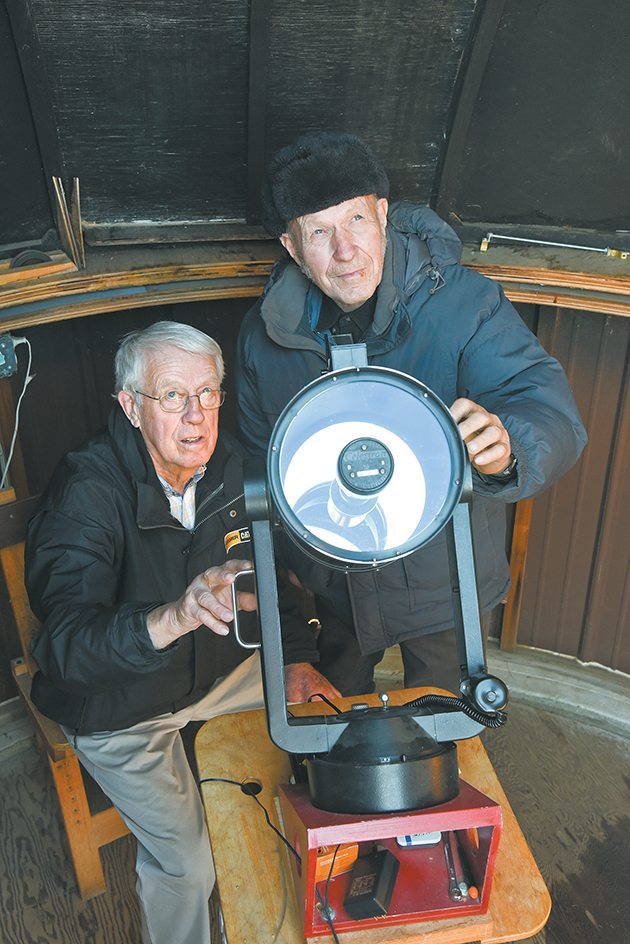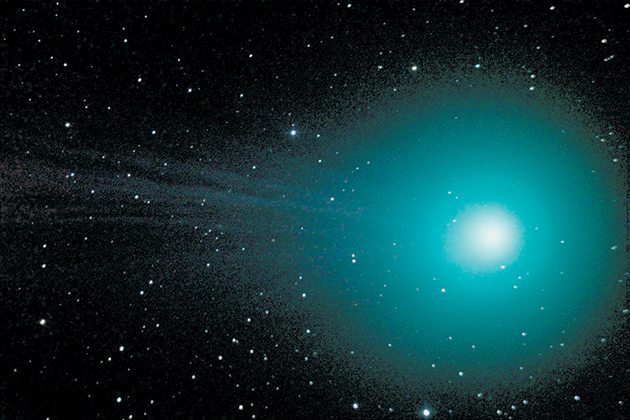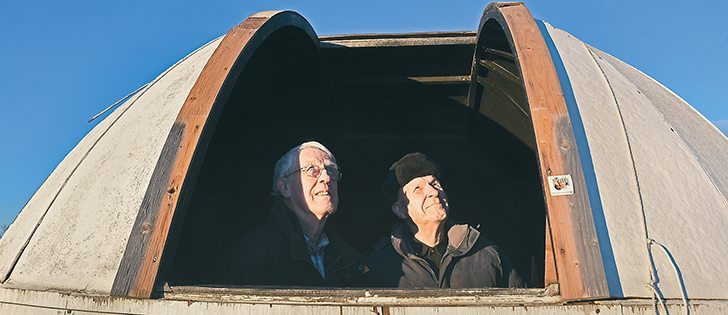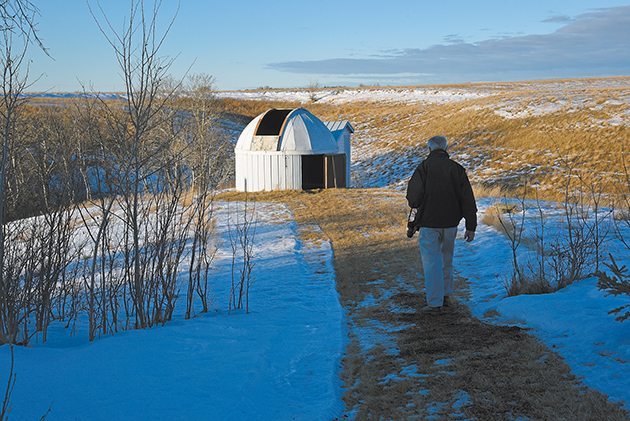Garry Stone and Tenho Tuomi used to often find their gaze wandering up — way up — while seeding and harvesting.
On tractors and combines, they would shift their focus to infinity, admiring the aurora borealis, the moon and the Milky Way.
“It’s something to think about when you’re out on the tractor,” said Stone.
It’s no surprise that they have both found time to turn their attention to astronomy since semi-retiring from farming.
Stone and his wife, Myrna, farm near Strongfield, Sask., while Tuomi and his wife, Velma, farm northwest of Lucky Lake, Sask.
Farmers and astronomers have much in common. Their main seasons are spring and fall and both pay close attention to the weather and rely on cloudless nights.
“If we want to see something in the sky, we have to pay more attention than farming,” Stone said.
“We need clear spots to find things in the skies.”
They said they are the only farmers who belong to the Saskatoon Centre of the Royal Astronomical Society of Canada.

They meet once a month at the University of Saskatchewan’s Physics Building with fellow enthusiasts to discuss individual projects, plan activities and conduct group studies of astronomical events.
“There’s a comet (Lovejoy) around now that’s very popular with everybody,” Tuomi said.
“We’re all concentrating on that because it’s a one-time visitor in our lifetime and we want to see it while it’s still here. It will be back in 8,000 years.”
The farmers met at a club meeting in 2002 and recognized common ground beyond astronomy and farming.
They were both born the same year, both sat on municipal councils and both married women who are nurses and whose maiden names are Dyck (no relation).
Read Also

Rural Manitoba resources slim on natural disaster planning
A study from Brandon University’s Rural Development Institute has found that many rural and small municipalities don’t have the staff or resources to make formal climate plans against natural disaster.
As well, both men do much more than just look at the sky.
Stone used skills honed as a cabinetmaker to build functional wooden telescopes in his farm’s workshop that range from a 90 millimetre refractor to 70 mm one.
Tuomi, who is a software developer, wrote a planetarium program to track stars.
As well, both have built homemade observatories a short jog from their house and barn that they can use year round.
Tuomi said gazing up through his 305 mm telescope and focusing on a distant galaxy is like looking for history in the sky.
“Every telescope is a time machine. It looks back in time. Light that we see from our closest neighbouring spiral galaxy (Andromeda nebula) started from there two and a half million light years ago,” he said.
“We’re time travellers, but I don’t suppose we think about it that way when we look at objects. We read about it and then it hits us that what we were looking at was something ancient.”
Tuomi said he still gets a sense of awe, even after years of studying the cosmos.
“We’re seeing things that no one else can see,” he said.
“Our own galaxy, the Milky Way that we live in, is about 100,000 light years across.”
Added Stone: “The farther away they are, the more you think about it.”
Tuomi said stars are constantly evolving.
“Stars are exploding, others are being born. It’s a constant evolution.”

To view Tuomi’s astronomy photographs, visit www.lex.sk.ca/astro/.

















